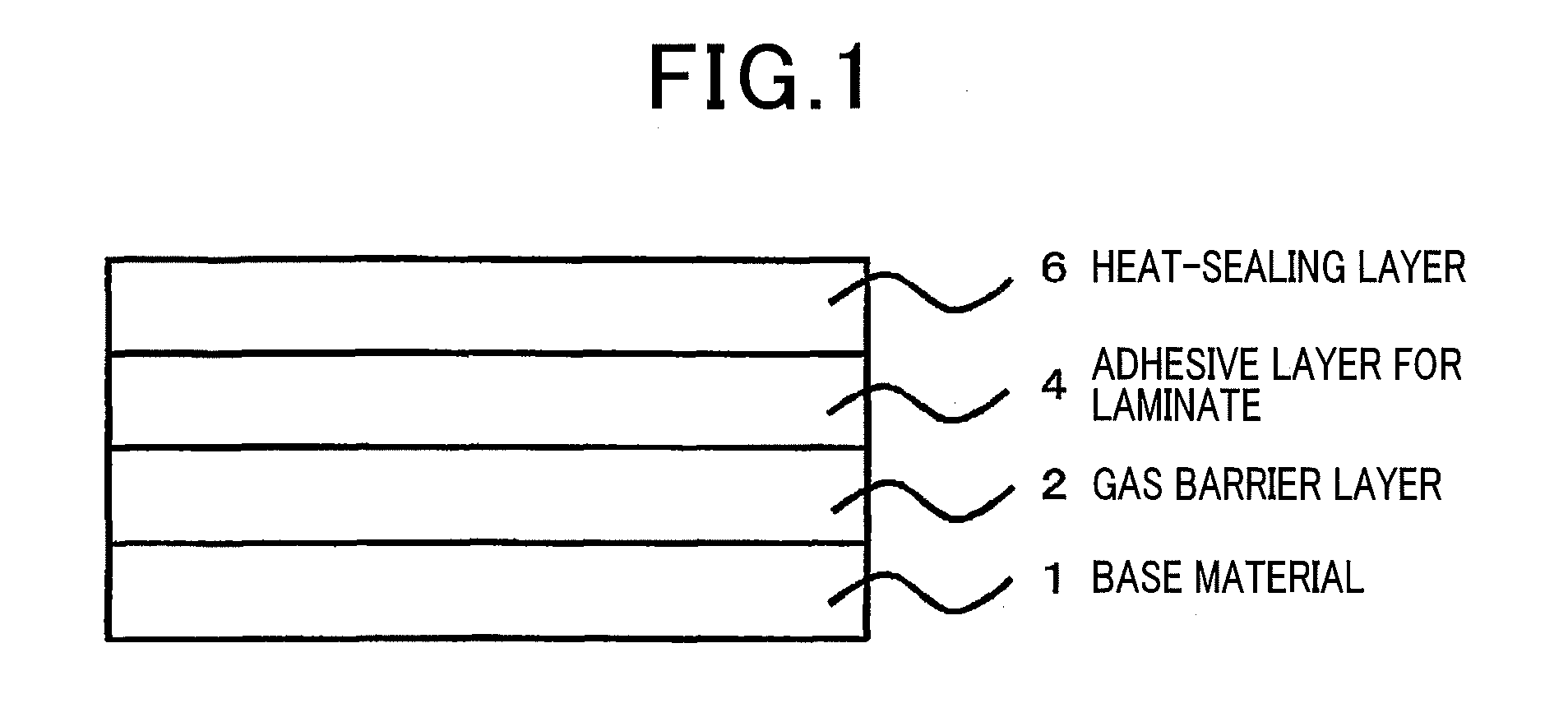Composition for film formation, laminate, film, sheet base material, method for producing composition for film formation, and method for preparing a cellulose dispersion
a technology of cellulose nanofibers and compositions, applied in the direction of cellulose coatings, adhesive types, coatings, etc., can solve the problems of lowering incineration efficiency, affecting the production efficiency of cellulose nanofibers, etc., to achieve the effect of suppressing the infiltration and permeation of deterioration factors, improving the barrier properties of cellulose nanofibers, and being less susceptible to environmental load
- Summary
- Abstract
- Description
- Claims
- Application Information
AI Technical Summary
Benefits of technology
Problems solved by technology
Method used
Image
Examples
examples 1-1-1-10
Preparation of Compositions for Film Formation in Examples 1-1-1-10
[0146]Different types of layered inorganic compounds and water soluble polymers were mixed and agitated with agitation blades using the formulation ratios and conditions of Table 1. The resulting dispersions were each added to 100 parts of a dispersion of cellulose fibers at a ratio indicated in Table 2 thereby preparing film-forming compositions of Examples 1-1 to 1-10.
TABLE 2ExampleExampleExampleExampleExampleExample1-11-21-31-41-51-61% transmittance625040486054(600 nm)Average particle size0.71.50.653.35.5after swellingAmount added to cellulose503010505010dispersion (based oncellulose dispersiontaken as 100)Average particle size0.71.50.653.35.5of composition forfilm formationOxygen permeability at1.81.21.520.10.730° C. and 70%Haze of laminate4.23.83.53.84.53.8ExampleExampleComp. Ex.Comp. Ex.ExampleExample1-71-81-11-21-91-101% transmittance526281826872(600 nm)Average particle size8.5120.531.24.2after swellingAmount ...
example 2
[0150]Examples of the invention are more particularly described below, which should not be construed as limiting the invention thereto.
[0151]The respective materials of cellulose fibers, a water soluble polymer, and layered minerals indicated below were mixed at formulation ratios indicated in the table thereby preparing coating dispersions.
[0152][Method 1 of Preparing Cellulose Fibers]
[0153]10 g of bleached kraft pulp was allowed to stand in 500 ml of water overnight to cause the pulp to be swollen, followed by adjusting the temperature to 20° C. and further adding 0.1 g of TEMPO and 1 g of sodium bromide thereby obtaining a pulp suspension. While agitating, 10 mmols / g of sodium hypochlorite per unit weight of the cellulose was added. On this occasion, about 1 N of a sodium hydroxide aqueous solution was added so that the pH of the pulp suspension was kept at about 10.5. Thereafter, oxidation reaction was performed for 240 minutes, followed by washing sufficiently with water to obt...
examples 2-1-2-12
Preparation of Gas Barrier Films in Examples 2-1-2-12
[0168]Gas barrier films were prepared such that coating dispersions (1)-(8), (10), (11), (13) and (14), which were prepared according to such formulation ratios and preparation procedures as set out in the foregoing [Methods 1, 2 and 4 of preparing coating dispersions], were each coated onto a 25 μm thick polyethylene terephthalate film (polyester film E5102, made by TOYOBO CO., LTD.) by a bar coating method in a dry thickness of 1.0 μm, followed by drying to form a gas barrier layer.
[0169][Preparation of Gas Barrier Films for Packaging Material in Examples 2-1 to 2-12]
[0170]For use as a packaging material by coating the coating dispersions (1)-(8), (10), (11), (13) and (14) prepared before, a heat-sealing layer was bonded to a gas barrier side through an adhesive layer for lamination according to a dry lamination method and aged at 50° C. for 4 days to prepare a bas barrier film for packaging material. The heat-sealing layer used...
PUM
| Property | Measurement | Unit |
|---|---|---|
| particle size | aaaaa | aaaaa |
| particle size | aaaaa | aaaaa |
| particle size | aaaaa | aaaaa |
Abstract
Description
Claims
Application Information
 Login to View More
Login to View More - R&D
- Intellectual Property
- Life Sciences
- Materials
- Tech Scout
- Unparalleled Data Quality
- Higher Quality Content
- 60% Fewer Hallucinations
Browse by: Latest US Patents, China's latest patents, Technical Efficacy Thesaurus, Application Domain, Technology Topic, Popular Technical Reports.
© 2025 PatSnap. All rights reserved.Legal|Privacy policy|Modern Slavery Act Transparency Statement|Sitemap|About US| Contact US: help@patsnap.com

